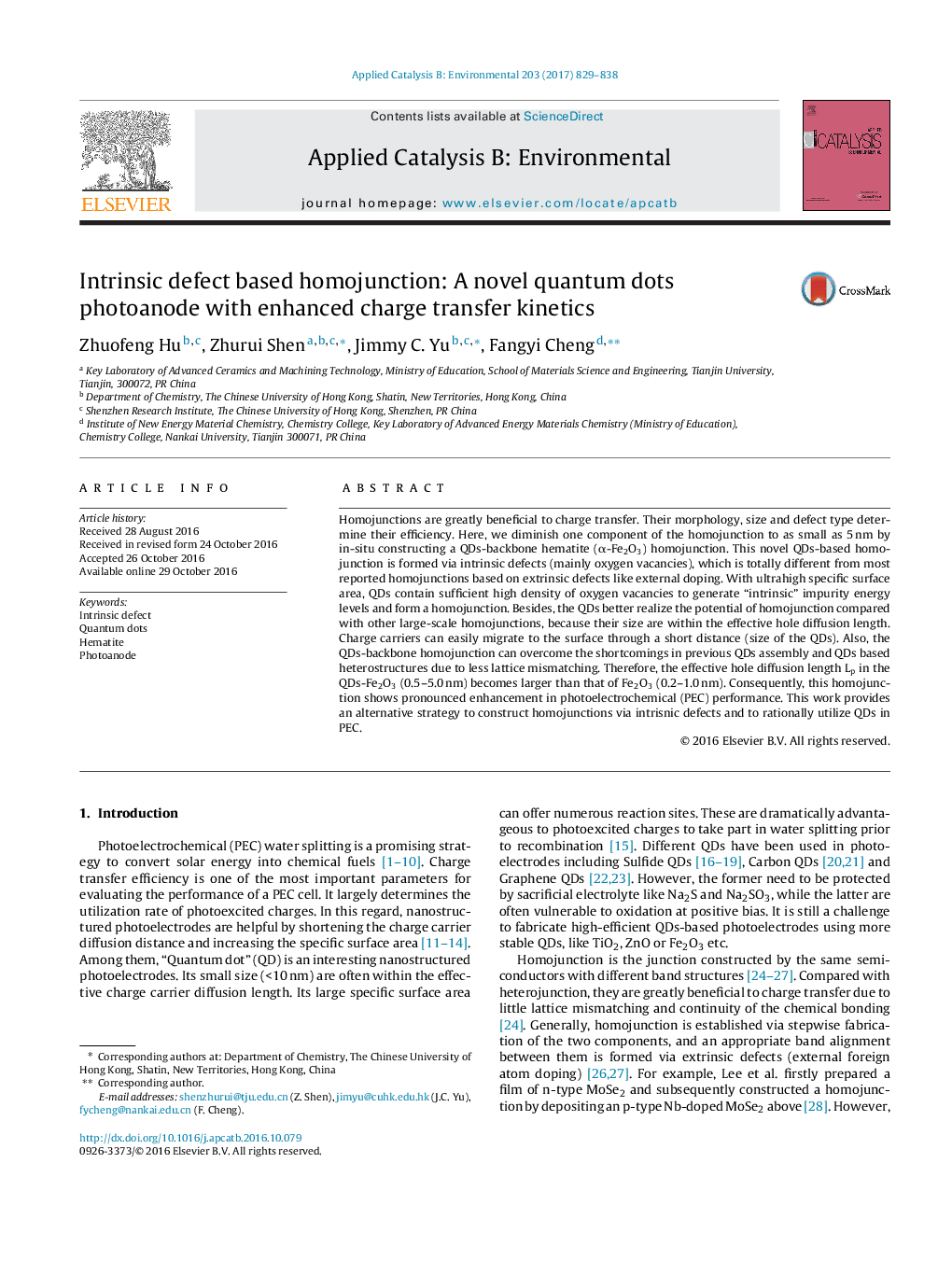| Article ID | Journal | Published Year | Pages | File Type |
|---|---|---|---|---|
| 6454588 | Applied Catalysis B: Environmental | 2017 | 10 Pages |
â¢Here, we diminish one component of the homojunction to as small as 5 nm by in-situ constructing a QDs-backbone hematite (α-Fe2O3) homojunction.â¢This novel QDs-based homojunction is formed via intrinsic defects (mainly oxygen vacancies), which is totally different from most reported homojunctions based on extrinsic defects like external doping.â¢With ultrahigh specific surface area, QDs contain sufficient high density of oxygen vacancies to generate “intrinsic” impurity energy levels and form a homojunction.â¢The QDs better realize the potential of homojunction compared with other large-scale homojunctions, because their size are within the effective hole diffusion length.â¢This homojunction shows pronounced enhancement in photoelectrochemical (PEC) performance. This work provides an alternative strategy to construct homojunctions via intrisnic defects and to rationally utilize QDs in PEC.
Homojunctions are greatly beneficial to charge transfer. Their morphology, size and defect type determine their efficiency. Here, we diminish one component of the homojunction to as small as 5 nm by in-situ constructing a QDs-backbone hematite (α-Fe2O3) homojunction. This novel QDs-based homojunction is formed via intrinsic defects (mainly oxygen vacancies), which is totally different from most reported homojunctions based on extrinsic defects like external doping. With ultrahigh specific surface area, QDs contain sufficient high density of oxygen vacancies to generate “intrinsic” impurity energy levels and form a homojunction. Besides, the QDs better realize the potential of homojunction compared with other large-scale homojunctions, because their size are within the effective hole diffusion length. Charge carriers can easily migrate to the surface through a short distance (size of the QDs). Also, the QDs-backbone homojunction can overcome the shortcomings in previous QDs assembly and QDs based heterostructures due to less lattice mismatching. Therefore, the effective hole diffusion length Lp in the QDs-Fe2O3 (0.5-5.0 nm) becomes larger than that of Fe2O3 (0.2-1.0 nm). Consequently, this homojunction shows pronounced enhancement in photoelectrochemical (PEC) performance. This work provides an alternative strategy to construct homojunctions via intrisnic defects and to rationally utilize QDs in PEC.
Graphical abstractA novel quantum dots (QDs)-based hematite homojunction array is established via intrinsic defects, which is now used as an excellent photoanode for water oxidation.Download high-res image (187KB)Download full-size image
